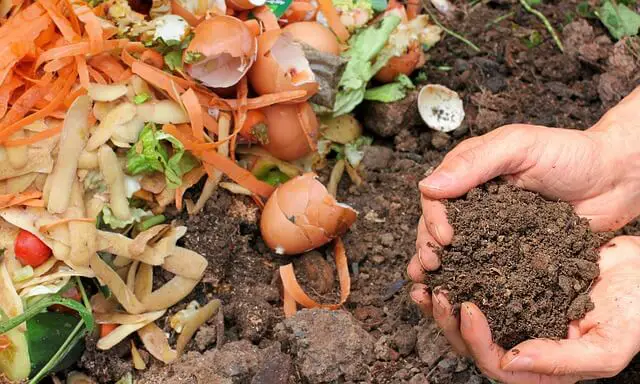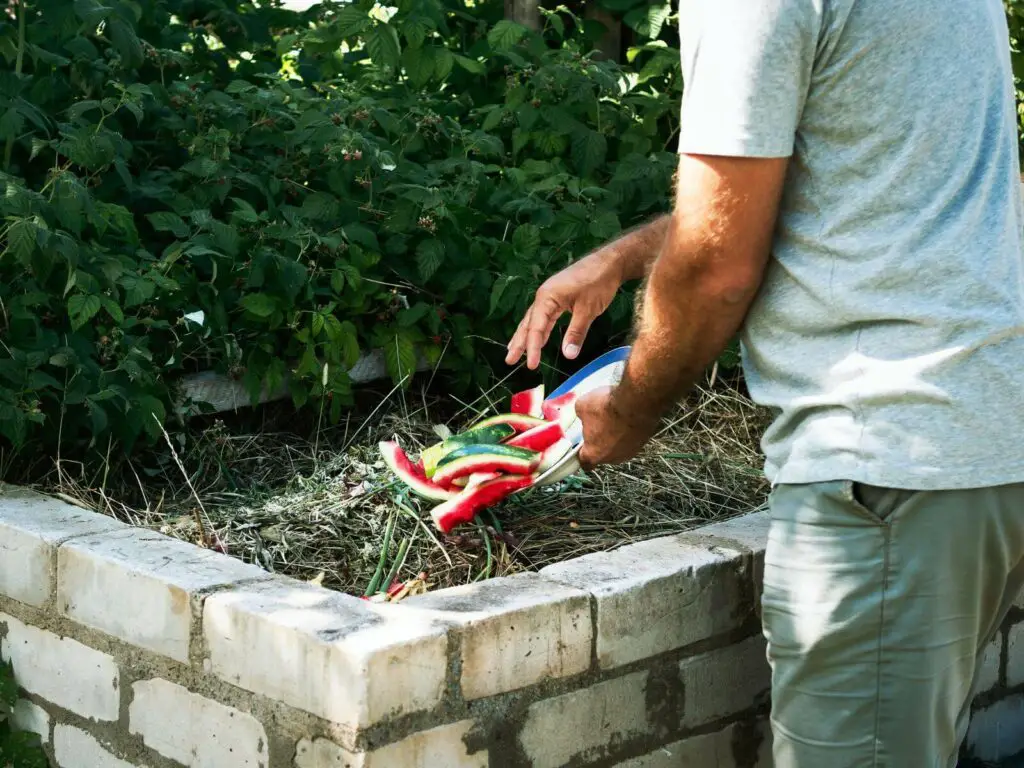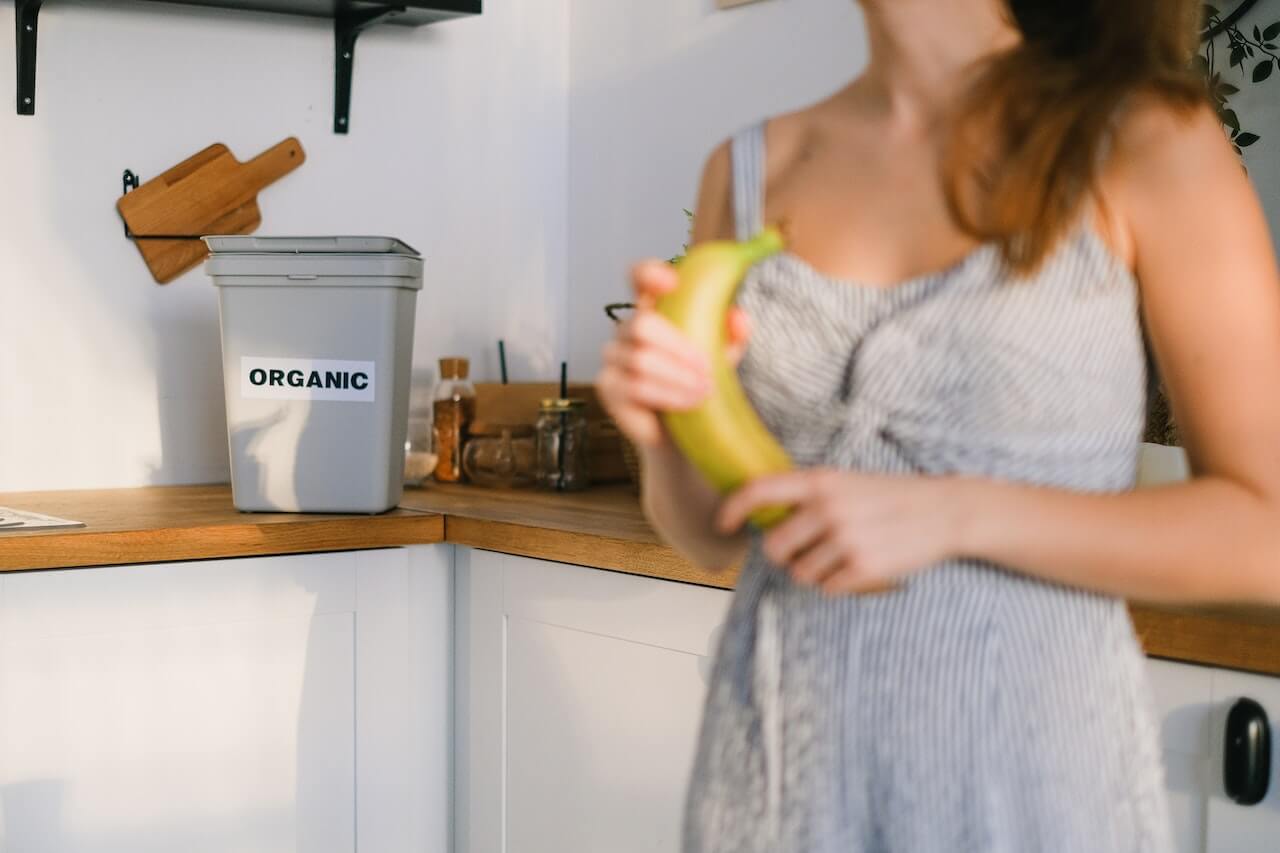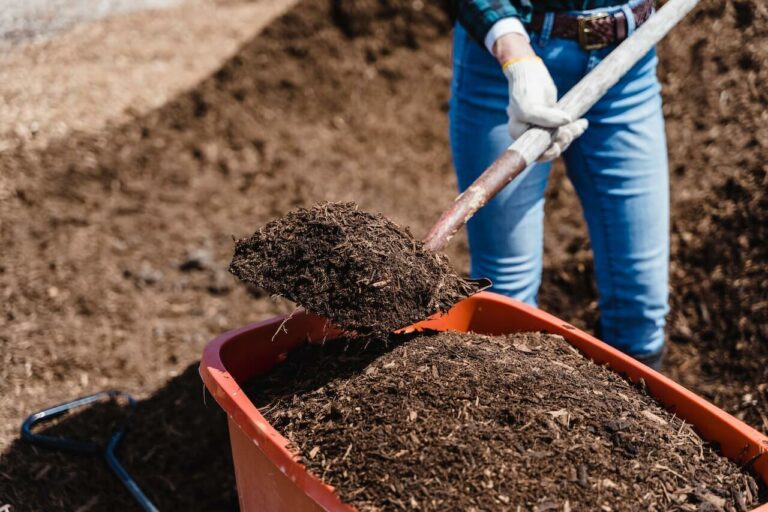Composting is a great way to reduce your environmental footprint and help make your garden healthier. But understanding composting can be a daunting task when you’re just starting out. In this beginner’s guide, we’ll break down everything you need to know about composting for beginners from what it is and why it’s so important to what happens when compost becomes too dry.
What Is Compost?
Compost is the result of organic matter (food scraps, yard waste, etc.) that has been broken down by bacteria and other microorganisms over time. The result of this process is a nutrient-rich soil amendment that can be used in gardens instead of chemical fertilizers. Not only does compost improve the quality of soil, but it also helps retain moisture, prevents weeds from taking root, and supports beneficial microbial activity in the soil.
Why Is Compost Important?
Compost is an incredibly important part of any healthy garden or landscape. It helps maintain soil structure and supports beneficial microbial activity that improves plant health and growth. Additionally, composting reduces the amount of waste sent to landfills which helps reduce greenhouse gas emissions that are harmful to our environment. Plus, using compost can save you money in the long run since it eliminates the need for expensive chemical fertilizers!
What Happens When Compost Dries Out?
When compost dries out, it stops breaking down organic matter into useful nutrients for your plants. This can cause your plants to become malnourished due to a lack of essential minerals and vitamins found in nutrient-rich soils created through composting. To prevent this from happening, make sure you keep your compost pile moist (but not too wet) by adding water as needed and covering it with a tarp if necessary. Additionally, turn your pile regularly so air can circulate throughout which will help keep moisture levels balanced in all areas of the pile.

An Introduction to Composting: What It Is and How To Get Started
Have you ever wondered how composting works? Or why it’s so beneficial for the environment? Well, look no further.
What Is Composting?
Composting is the process of breaking down organic matter into a nutrient-rich soil amendment. When organic matter decomposes, it releases nutrients that are then absorbed by plants and trees for growth. Compost can also be used to fertilize or condition soil for farming or gardening purposes. The process of composting is an incredibly simple way to reduce your household waste while giving back to the environment – all from the comfort of your own home!
How To Start Composting?
The composting process begins with gathering materials from around your home such as food scraps, coffee grounds, eggshells, newspaper, and yard clippings. The materials should be stored in a container and mixed in roughly equal parts before being placed in a compost bin or pile in your backyard. You should then mix the material regularly with a pitchfork or shovel to ensure proper aeration (airflow) throughout the bin or pile.
As oxygen enters the bin, microorganisms begin to break down and consume the material, resulting in nutrient-dense humus after 4-6 months (depending on the climate). After 4-6 months have passed, you will have created usable compost that can be added directly into your garden beds or used as fertilizer for houseplants!
Benefits of Composting
Composting has numerous benefits for both you and the environment. Not only does it reduce household waste but it also helps improve soil health by adding vital nutrients back into depleted soils. Furthermore, it increases water retention in soils which reduces runoff during times of heavy rain and helps control erosion along riverbanks.
Additionally, composted materials can act as natural pest repellents due to their strong scent which deters certain insects from entering gardens or homes! Finally, compost can help reduce greenhouse gas emissions since fewer materials are sent off to landfills where they would otherwise decompose slowly over time while releasing harmful methane gas into our atmosphere.
There are many reasons why one should consider starting their compost pile at home. Not only does it benefit you by reducing household waste but it also helps give back to our environment by restoring essential nutrients into depleted soil systems and reducing harmful greenhouse gases from entering our atmosphere. So if you ever find yourself wondering what you can do to help make our planet a better place – try out some basic composting techniques – you won’t regret it!

A Comprehensive Look at Different Types of Composting
Composting has become a popular way to reduce waste while creating a nutrient-rich soil amendment. But did you know that there are various types of composting? From backyard compost bins to vermicomposting, let’s explore the different types of composting and how they can benefit your garden.
Backyard Compost Bins
The most basic form of composting is done in your own backyard with a simple bin or pile of organic materials. The easiest way to construct your own backyard compost bin is to buy one from a home improvement store or online retailer. This type of compost bin is typically made from plastic and designed for easy use, but wooden bins are also available. If you don’t want to buy a bin, you can make your own out of chicken wire or any other material that allows air circulation and water drainage. Once you have your compost bin set up, simply fill it with all the organic materials such as leaves, grass clippings, vegetable scraps, eggshells, coffee grounds and more.
Vermicomposting
Vermicomposting is an easy way to recycle food scraps into rich soil by using worms in a contained environment. All you need is an airtight container like a Rubbermaid bin and some red wiggler worms (which can be purchased online). Once you have your container filled with shredded newspaper, dirt, and then the worms added in, add in any food scraps (no fats or proteins) every week and mix it around so the worms can break down the nutrients in the scraps quickly. The great thing about vermicomposting is that it requires very little effort on your part since the worms do most of the work for you!
Hot Compost Piles
Hot compost piles are an efficient way to create nutrient-rich soil quickly by maintaining temperatures between 130-150°F for several days at a time. Building one of these piles successfully takes some trial and error since you need to maintain the proper carbon-to-nitrogen ratio (25 parts carbon to 1 part nitrogen) as well as enough moisture so that everything breaks down properly. Not only will hot compost piles create excellent soil amendment quickly but they will also help control weeds by killing weed seeds when exposed to high temperatures for long periods.
Cold Composting
Finally, we have cold composting – this type of compost is best suited for those who don’t want too much hassle when it comes to managing their pile but still wants good quality end product. Cold composter piles require no turning which makes them much easier to manage than hot ones; however, they take significantly longer – anywhere between six months and two years! Cold composter piles also require less moisture than hot ones and should generally be kept covered with plastic or tarpaulin during rainy weather in order not to become waterlogged and lose their nutrient content prematurely.
Composting may seem intimidating at first but once you understand what type of compost best suits your needs then it becomes much easier! Whether it’s backyard compost bins, vermicomposting or hot piles – all types of composting have their benefits which makes them great options for reducing waste while also creating nutrient-rich soil amendments for your garden beds or potted plants. So go ahead and give one (or all!) type of composting a try – we guarantee that you won’t regret it!
Is Your Compost Drying Out?
Composting is an incredibly rewarding process for gardeners of any level. From the novice to the pro, composting helps you break down organic materials like food scraps and yard waste or even compost dog poop into a nutrient-rich soil amendment that helps your plants grow and thrive. But, as with anything else, there’s a right way and a wrong way to compost. If your compost is drying out too quickly, it could be a sign that something isn’t quite right. Let’s take a look at some signs that your compost has dried out so you can get back on track in no time!

Smell Test
Does your compost smell sweet or earthy? If not, it may have dried out too much. A dry pile won’t have enough moisture to encourage microbial activity which means it won’t produce the signature earthy aroma of a healthy compost bin.
Temperature Test
Compost should be warm when mixed properly and actively decomposing – about 130-150 degrees Fahrenheit if you measure with a thermometer. A dry pile would be significantly cooler – if you sense any chill when putting your hand into the center of the pile, it’s likely that it needs more moisture.
Appearance Test
Is the color of your compost dark brown or black? Is it crumbly? Do pieces of material still maintain their original shape? If not, then chances are your compost has dried out too much. A dry pile will look lighter in color due to a lack of microbial activity and will not contain the same crumbly texture as one that’s rich in moisture and actively breaking down the material.
Moisture Test
To check if moisture levels are where they need to be, grab a handful of material from the center of the pile (after taking off any gloves) and squeeze it tightly in your fist before opening up your hand again (careful not to drip). If there are several drops of water present then you’re doing great! If none come out or very few surfaces then this is likely an indication that your bin could use some more water/moisture added back in!
Composting can be tricky business, but with these simple tests, you can make sure that your piles never dry out too much! Keep an eye on the temperature, smell, appearance, and moisture levels when tending to your bins and remember – adding just enough water is key for creating beautiful gardens full of life! With these tips in mind, happy composting!
How to Re-Wet and Balance Your Compost
If you’re an avid gardener, you know how important compost is to the health of your soil. But what happens when your compost gets too dry? If that has happened to you, don’t worry! There are a few simple steps you can take to re-wet and balance your dried-out compost. Let’s take a look at how it’s done.
Adding Moisture & Oxygen
The first step in re-wetting and balancing your compost is to add moisture and oxygen into the mix. You can do this by soaking the pile with water, turning the pile frequently, or adding wet materials such as grass clippings or kitchen scraps. These will help provide oxygen and moisture while also introducing some beneficial microorganisms back into the mix.
Balancing Carbon & Nitrogen
The next step is to balance out the carbon and nitrogen in your compost. Compost needs both of these elements for it to break down properly. To do this, you’ll need to add organic materials that are high in carbon (such as leaves) as well as materials that are high in nitrogen (such as manure or kitchen scraps). This will help ensure that your compost is balanced and ready for use.

Adding Bacteria & Fungi
In addition to providing oxygen, bacteria, and fungi play an important role in breaking down organic matter into nutrient-rich soil. To encourage bacterial growth in your compost pile, consider adding a high-quality compost starter. These products contain beneficial microorganisms that greatly accelerate the decomposition process by breaking down tough cellulose fibers into simple sugars that plants can easily absorb. For best results, add 1/2 cup of either product per five gallons of water when initially wetting your compost pile before balancing it with additional organic matter.
Letting It Rest
Once you have added moisture, oxygen, carbon, and nitrogen back into your compost, it’s time to let it rest for a few weeks. During this resting period, the microorganisms will begin breaking down all of the organic material, creating rich nutrients for your soil. After about four weeks of resting time, your compost should be ready to use again!
Re-wetting and balancing a dried-out compost can seem like a daunting task at first but with a few simple steps it can be easily achieved. By adding moisture and oxygen into the mix, balancing out the carbon and nitrogen levels, and then letting it rest for several weeks you can have healthy compost once again! So don’t give up on those dried-out piles just yet – follow these tips so you can get back to gardening with ease!
The Dangers of Over-Drying Your Compost
Composting is one of the best ways to reduce your carbon footprint and help the environment. But, if you’re not careful, over-drying your compost can cause problems that will lead to a less productive compost pile. Let’s dive into what over-drying your compost means and how it affects your composting efforts.
What is Over-Drying?
Do you know how it feels when you pour water on an arid piece of soil? It takes a while for the water to be absorbed and oftentimes, much of it simply runs off. That’s because the soil has been over-dried due to a lack of moisture. Compost works in much the same way—if you don’t keep it moist enough, it will become too dry and unable to absorb any more moisture.
How Does Over-Drying Affect My Compost?
When your compost becomes too dry, it won’t be able to break down properly or build up beneficial organisms like fungi or worms. This can result in poor decomposition and low nutrient levels in your finished compost. Additionally, if there isn’t enough moisture in the pile, oxygen won’t be able to circulate through it properly which can lead to bad odors or even fire hazards (yes, compost piles can catch fire!).
What Can I Do To Prevent Over-Drying?
The key is balance—you want enough moisture so that your pile is damp but not soggy. A good rule of thumb is that you should water your pile whenever you turn it but don’t overdo it! You should also cover your pile with a tarp or other covering during particularly dry spells as this will help keep moisture from evaporating away quickly. Finally, make sure that all organic materials added to the pile are wet (not sopping wet) before adding them to the mix.
By following these tips and keeping an eye out for signs of over-drying (such as cracking or crumbling), you can keep your compost healthy and productive! Taking care of your compost correctly may seem daunting at first but with practice, you’ll find that keeping things just right becomes second nature! So get out there and start making some great compost!

How to Turn Old Compost into Nutrient-Rich Soil
If you’re a fan of gardening, then chances are you already know the importance of composting. Composting is the process of taking organic matter and breaking it down into rich soil that helps promote healthy plant growth. But what do you do if your compost pile has become old and dry? How can you turn it back into nutrient-rich soil?
The first step in turning old, dry compost back into nutrient-rich soil is to moisten it. You can do this by adding water and stirring the mixture with a garden fork or shovel. It’s important to make sure all of the material is evenly dampened, but not too wet. Once the compost has been adequately moistened, you can begin adding in new materials. This could be anything from leaves and grass clippings to kitchen scraps and coffee grounds. As long as it is organic matter, it will help break down in your compost pile and add nutrients back into the soil.
Next, you should mix your compost pile every few days with a garden fork or shovel to aerate it and keep things moving along. This will help create more oxygen for microorganisms, which will speed up the decomposition process even further. Additionally, mixing your pile regularly will help prevent any bad smells from developing as well as reduce caking and lumping. It’s best to avoid using metal tools when stirring your compost pile since they can damage the beneficial microorganisms living within it.
Finally, you should monitor your compost pile for temperature changes as this indicates successful decomposition. To check on the temperature of your pile, use a thermometer or simply stick your hand or foot in there (if it’s not too hot). When your compost reaches between 130°F-158°F then that means things are working correctly!
With these simple steps, you can easily turn old, dry compost into nutrient-rich soil that will give new life to any garden! Monitoring temperatures and stirring regularly are key components for success here so don’t forget those important steps! Whether you’re an experienced gardener or just getting started with composting – following this guide can help bring life back to a seemingly dead situation! Happy gardening!






